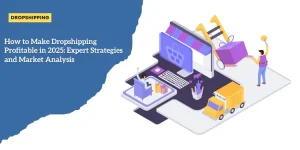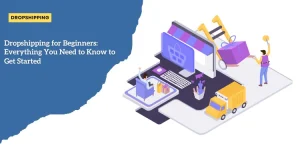2025 Ecommerce Startup Guide: From Product Selection to First Sale

Anúncios
Overview of Ecommerce Business Models and Opportunities in 2025
The ecommerce landscape in 2025 is a dynamic and diverse ecosystem, offering multiple business models and opportunities for aspiring entrepreneurs.
Popular models include:
Anúncios
| Model | Description | Examples |
|---|---|---|
| B2C | Business-to-Consumer model where businesses sell products directly to end consumers. | Fashion brands, electronics, beauty products (e.g., Amazon, Zara, Nike) |
| B2B | Business-to-Business model where companies sell products or services to other businesses. | Wholesalers, manufacturers, suppliers (e.g., Alibaba, Grainger, SAP) |
| C2C | Consumer-to-Consumer model where consumers sell products directly to other consumers through a platform. | Platforms like eBay, Poshmark, Craigslist |
| Dropshipping | A model where businesses sell products without holding inventory. Products are shipped directly from third-party suppliers to customers. | Shopify stores, Oberlo, Printful |
| Subscription Services | Companies offer products or services on a recurring basis, often at regular intervals. | Subscription boxes, streaming services (e.g., Netflix, Dollar Shave Club, Blue Apron) |
Opportunities in ecommerce are vast, ranging from niche product markets to global expansion.
Entrepreneurs can tap into emerging trends, leverage innovative technologies, and cater to specific customer needs for long-term growth.
Key Factors Driving Ecommerce Growth and Market Trends
Several key factors are driving ecommerce growth in 2025:
Anúncios
- Advancements in Technology: AI, machine learning, and data analytics are enhancing customer experiences through personalized recommendations and efficient operations.
- Mobile Commerce: With the increasing use of smartphones, mobile shopping continues to rise. Optimizing online stores for mobile users is crucial.
- Social Commerce: Platforms like Instagram and TikTok are transforming into shopping hubs, enabling direct purchases through social media.
- Sustainability: Consumers are increasingly demanding eco-friendly and sustainable products. Businesses that prioritize sustainability can gain a competitive edge.
- Global Reach: Cross-border ecommerce is expanding, allowing businesses to reach international customers with ease.
Realistic Expectations for New Ecommerce Entrepreneurs
Entering the ecommerce market in 2025 requires a realistic outlook:
- 💰 Profitability: It’s important to understand that achieving profitability in the first year is challenging. Initial investments in marketing, inventory, and operations are significant. According to recent data, many businesses rarely see major profits within the first year.
- 🎯 Target Audience: Thoroughly researching and defining your target audience helps in tailoring your marketing efforts and maximizing conversions.
- 📈 Demand: Ensuring that your product meets a genuine market demand is fundamental. Validate your product idea before substantial investment.
- 🔄 Adaptability: The ecommerce landscape is continuously evolving. Staying flexible and open to experimenting with different marketing strategies, platforms, and products is essential.
- 🌟 Customer Experience: Prioritize providing an exceptional customer experience. This includes a user-friendly website, responsive customer service, and efficient shipping processes..
Understanding these aspects provides a strong foundation for navigating the modern ecommerce landscape and is pivotal in setting the stage for success.
Product Research and Market Validation
Strategies for Identifying Profitable Product Opportunities
Identifying profitable product opportunities requires a deep understanding of market trends, consumer needs, and competitive landscapes.
Begin by analyzing emerging trends on platforms like Google Trends, social media, and industry reports.
Look for products that solve common problems or cater to specific niches, as these can often offer untapped opportunities.
Additionally, consider products that align with personal interests or passions. This approach not only ensures a deeper understanding of the potential market but also drives motivation and dedication.
Lastly, explore wholesale directories, trade shows, and online communities to discover unique products that aren’t widely available yet.
Methods for Validating Product Demand and Market Viability
Once you’ve identified potential products, validating their demand is crucial.
Use keyword research tools like Google Keyword Planner to assess search volumes and trends.
Platforms like Amazon Best Sellers and eBay Trending can provide insights into top-selling products.
Social media platforms are also valuable for gauging interest. Monitor related hashtags, trends, and discussions to understand what consumers are talking about.
Additionally, consider conducting surveys or creating landing pages to directly gauge consumer interest and gather feedback.
Analyzing Competition and Finding Your Unique Selling Proposition
Understanding your competition is essential to carve out your unique place in the market. Start with a thorough competitive analysis.
Identify key competitors and examine their product offerings, pricing strategies, marketing tactics, and customer feedback.
From this analysis, pinpoint gaps and areas for improvement.
Your unique selling proposition (USP) could be anything from superior product quality, better pricing, exceptional customer service, or even brand values like sustainability or ethical production.
By leveraging these insights and continuously adapting, you can create a compelling and competitive ecommerce venture.
By now, you should have a solid understanding of the modern ecommerce landscape and how to identify viable products.
Next, it’s time to start laying the groundwork for your business’s foundation.

Building Your Business Foundation
Creating a Comprehensive Business Plan
Crafting a detailed business plan is essential for structuring your ecommerce venture.
This roadmap sets the trajectory for your business operations, offering clarity and direction. At its core, a business plan should cover your company’s mission, target market, competitive analysis, marketing strategies, and financial projections.
It also serves as a valuable document to showcase your brand’s core values to potential investors and partners. Utilizing a business plan template can simplify the process, ensuring you cover all necessary elements that contribute to a successful launch.
Choosing the Right Business Structure
Selecting the appropriate business structure is pivotal for your ecommerce success.
Options range from sole proprietorships and partnerships to limited liability companies (LLCs) and corporations. Each structure has its pros and cons, particularly concerning liability, taxes, and regulatory implications.
An LLC, for instance, offers liability protection and tax advantages, making it a popular choice among ecommerce entrepreneurs.
When finalizing your decision, consider consulting with a legal expert to ensure compliance with all necessary legal requirements.
Calculating Startup Costs and Securing Funding
Understanding your financial needs is critical when building your ecommerce foundation.
Initial costs can include website development, product sourcing, marketing, and operational expenses.
It’s helpful to categorize expenses into areas such as operating, online, and shipping costs, to name a few.
Once your budget is clear, explore diverse funding options. While many entrepreneurs might use personal savings, others may turn to family loans or external investors.
Regardless of the method, ensure you have a clear financial strategy to support your business through its initial phases.
While these foundational steps may seem daunting, they are crucial in establishing a sustainable ecommerce business. With a solid foundation, you are better equipped to maneuver the dynamic world of ecommerce.
Setting Up Your Online Store
Selecting the Right Ecommerce Platform and Essential Tools
Choosing the right ecommerce platform is crucial for your online store’s success.
The platform serves as the foundation on which your store will operate, so it’s important to select one that aligns with your business goals and technical skills.
Some popular ecommerce platforms in 2025 include Shopify, WooCommerce, and BigCommerce.
These platforms offer a range of features, such as mobile-readiness, customizable themes, and integrations with payment gateways and shipping solutions.
Consider the following when selecting a platform:
- 🔧 Ease of Use: Look for platforms with intuitive interfaces and drag-and-drop editors, which can simplify the store setup process.
- 📈 Scalability: Ensure the platform can grow with your business, offering advanced features as your operation expands.
- 🎨 Customization Options: Opt for platforms that allow you to customize your storefront to align with your brand’s identity.
Designing an Effective and User-Friendly Online Storefront
The design of your online store plays a pivotal role in attracting and retaining customers.
A user-friendly, aesthetically pleasing storefront can significantly enhance the shopping experience.
Key Elements of Effective Store Design
- Responsive Design: Ensure your store is mobile-friendly. With a growing number of consumers shopping on mobile devices, a responsive design is essential.
- Clear Navigation: Maintain simple and intuitive navigation to help visitors find what they need quickly. Categories, search bars, and filters can improve user experience.
- High-Quality Images: Use high-resolution product images from multiple angles. This helps build trust and provides customers with a clear idea of what they are purchasing.
- Compelling Product Descriptions: Write clear, concise, and persuasive product descriptions. Highlight key features, benefits, and specifications.
Implementing Secure Payment Gateways and Shipping Solutions
Implementing secure and reliable payment gateways and shipping solutions is critical for building customer trust and ensuring smooth transactions.
Secure Payment Gateways
Offer various payment options to accommodate different customer preferences.
Popular payment gateways like PayPal, Stripe, and Square are known for their security and ease of use.
Ensure your gateway:
- 💳 Supports Multiple Payment Methods: Debit/credit cards, digital wallets, and bank transfers.
- 🔒 Complies with PCI DSS: Ensure compliance with Payment Card Industry Data Security Standards for secure transactions.
- 🛡️ Offers Fraud Detection: Use built-in fraud detection tools to protect customer data and mitigate risks.
Efficient Shipping Solutions
Shipping is a crucial part of the ecommerce experience.
Implementing reliable and efficient shipping solutions can make a significant difference.
- 🚚 Shipping Carriers: Partner with reputable shipping carriers like FedEx, UPS, and DHL. Consider platforms that offer integrated shipping solutions.
- 💸 Shipping Costs: Clearly communicate shipping costs to avoid surprises at checkout. Offer options for standard, expedited, and international shipping.
- 📦 Order Tracking: Provide tracking information to customers to keep them informed about their order status. This enhances the customer experience and builds trust.
By thoughtfully setting up your online store with the right platform, effective design, and secure payment and shipping solutions, you’re well on your way to creating a successful ecommerce venture.
As you move forward, continue to focus on refining your operations and strategies to better serve your customers and grow your business.
Developing Your Marketing Strategy
Creating a Multi-Channel Marketing Approach
A successful marketing strategy involves using various channels to reach your target audience.
Begin by understanding where your potential customers spend their time and how they prefer to shop.
A multi-channel marketing approach ensures that your brand reaches potential customers across different platforms, thereby increasing visibility and engagement.
Consider utilizing:
- Email Marketing: Build and segment email lists to send personalized promotions and updates.
- Social Media: Engage with customers on platforms like Facebook, Instagram, and TikTok.
- Content Marketing: Create valuable content such as blogs, videos, and infographics.
- Paid Advertising: Use Google Ads or social media ads to reach a broader audience.
Experimenting with these different channels will help you identify the most effective methods for your business.
Leveraging Social Media and Influencer Partnerships Effectively
Social media platforms are powerful tools for marketing your ecommerce business.
They offer a space to connect with your audience, share your brand story, and promote products.
Posts, stories, and videos can drive traffic to your website and boost sales.
- 📝 Creating Engaging Content: Post regularly and use a mix of content types, such as pictures, videos, and stories. This keeps your audience engaged and interested in your brand.
- 🤝 Influencer Partnerships: Collaborate with influencers who resonate with your brand and target audience. Influencers can help you reach a wider audience and lend credibility to your products. Look for influencers with high engagement rates rather than those with the most followers. This ensures your brand message isn’t lost.
Implementing SEO Best Practices for Organic Growth
Search engine optimization (SEO) is crucial for organic growth.
It ensures your website ranks higher in search engine results, making it easier for potential customers to find you.
- Keyword Research: Identify and use relevant keywords throughout your site content, product descriptions, and blog posts.
- On-Page SEO: Optimize meta tags, headers, and images. Ensure your website is mobile-friendly and loads quickly.
- Content Creation: Regularly update your blog with high-quality, relevant content that addresses your customers’ pain points and interests.
- Link Building: Earn backlinks from reputable websites to improve your site’s authority.
By implementing these SEO best practices, you’ll enhance your website’s visibility and drive more organic traffic.
Remember, a strategic and well-rounded marketing plan is your key to successfully launching and growing your ecommerce business.
Paying attention to multi-channel approaches, social media, and SEO will position your brand for sustainable success.
Invest in these areas, monitor their performance, and adjust your strategy as needed for optimal results.
Operations and Fulfillment Management
Establishing Efficient Inventory Management Systems
Efficient inventory management is critical to the success of an ecommerce business.
Start by choosing a reliable inventory management system (IMS). An IMS helps automate stock levels, track sales, and forecast future inventory needs.
Inventory management tools like TradeGecko, Zoho Inventory, and Cin7 can streamline these processes.
Regularly update your inventory database to avoid stockouts or overstock situations.
Implementing barcode scanning and real-time inventory tracking are crucial steps to maintain accuracy and efficiency.
Developing Reliable Shipping and Fulfillment Processes
Creating dependable shipping and fulfillment processes ensures that products reach your customers on time and in good condition.
Start by selecting reputable shipping carriers like FedEx, UPS, and DHL. Offer multiple shipping options, such as standard, expedited, and overnight, to cater to different customer needs.
Integrate a shipping software like ShipStation or ShipBob to automate and simplify the shipping process.
Packaging is also vital – aim for durable and environmentally-friendly materials.
Communicate the shipping policies clearly on your website. Providing accurate shipping costs and delivery estimates will help manage customer expectations.
Additionally, consider offering order tracking to enhance the customer’s experience and trust.
Creating Customer Service Protocols and Return Policies
Providing excellent customer service is non-negotiable for ecommerce success. Establish clear customer service protocols to handle inquiries, complaints, and feedback efficiently.
Train your team to respond promptly and professionally through various channels like email, phone, live chat, and social media.
Develop a transparent and fair return policy. Outline the procedures for returns, exchanges, and refunds clearly on your website.
Make sure conditions are easy to understand and follow. Providing prepaid return labels can boost customer confidence and satisfaction.
Satisfactory resolutions to customer issues can lead to repeat business and positive reviews.
Ensure continuous improvement by regularly reviewing and updating your customer service strategies based on feedback and performance metrics.
With these core elements in place, your ecommerce operations and fulfillment activities will become more streamlined, setting the stage for future growth and scalability.
Measuring Success and Scaling Growth
As you navigate the world of ecommerce, success measurement and growth scaling play crucial roles in ensuring your business remains on track.
This chapter outlines the key aspects to track, analyze, and evolve to meet your goals.
Tracking Key Performance Indicators (KPIs) for Your Ecommerce Business
KPIs provide measurable values to evaluate the success of various business activities.
Here are essential KPIs to track:
- 📊 Sales Conversion Rate: Measure the percentage of visitors who complete a purchase.
- 💰 Average Order Value (AOV): Calculate the average amount spent each time a customer places an order.
- 💵 Customer Acquisition Cost (CAC): Determine the cost of acquiring a new customer.
- 📈 Customer Lifetime Value (CLV): Estimate the total revenue expected from a customer during their relationship with your business.
- 🛒 Cart Abandonment Rate: Monitor the percentage of shoppers who add items to their cart but don’t complete the purchase.
Regularly tracking these KPIs helps you understand business performance and identify areas for improvement.
Analyzing Data to Optimize Operations and Marketing Efforts
Utilizing data analytics effectively can immensely optimize operations and marketing strategies:
- 🌐 Traffic Analysis: Understand where your visitors come from, what they prefer, and how they navigate your site using tools like Google Analytics.
- 💬 Customer Feedback: Regularly collect and analyze customer reviews and feedback to refine your products and services.
- 🔍 A/B Testing: Experiment with different marketing messages, website designs, and sales tactics to determine what works best for your audience.
By analyzing these data points, you can make informed decisions to reduce operational costs, enhance user experience, and create more effective marketing campaigns.
Strategies for Sustainable Business Growth and Expansion
To achieve sustained growth:
- 🛍️ Expand Product Lines: Regularly introduce new products to diversify your offerings and attract a broader audience.
- 💻 Invest in Technology: Upgrade to advanced tools that can automate processes and enhance customer experience.
- 🔄 Optimize Customer Retention: Use loyalty programs and personalized marketing efforts to keep customers engaged and purchasing.
Implementing these strategies helps ensure your business remains competitive and continues to grow sustainably.
In the rapidly evolving ecommerce landscape, continually measuring success and scaling growth are non-negotiable practices for thriving.






